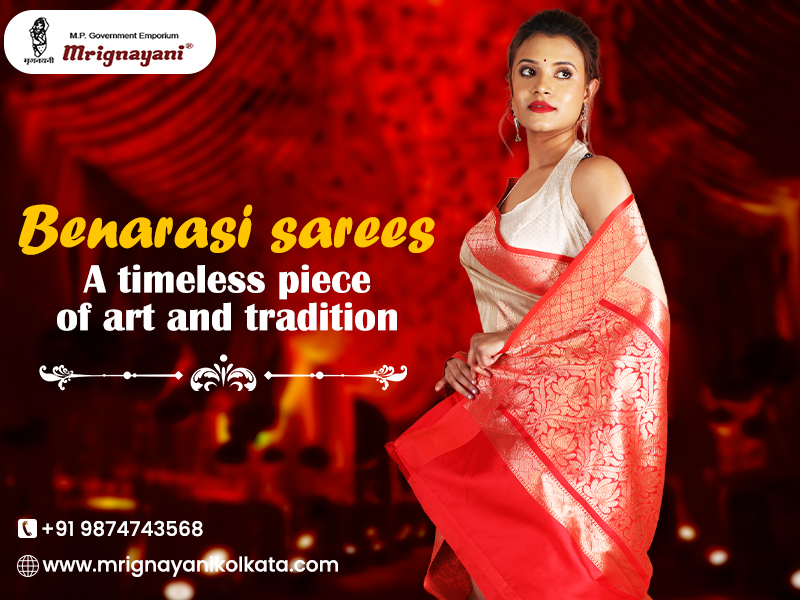Benarasi sarees are a timeless symbol of elegance and cultural wealth, weaving together centuries of history and artistry. With intricate craftsmanship, luxurious silk, and detailed zari work, these sarees reflect opulence and tradition. Let us delve into the history of these designer sarees and discover how they have become a lasting legacy.
- Unraveling the historical significance
The historical significance of these sarees is deeply rooted in the Mughal era. Royal families and aristocrats played a significant role in patronizing and promoting these sarees, leading to their wide popularity. Artisans seamlessly blended traditional Varanasi weaving techniques with Persian motifs and designs. This fusion of indigenous artistry and Persian aesthetics gave rise to the exquisite Benarasi sarees we know today. These sarees further gained prominence during the British colonial period when women of Indian royalty and nobility adorned them. This established the sarees as a symbol of prestige and elegance. Presently, Benarasi sarees are a pivotal element in bridal trousseau and special occasions, representing opulence and grandeur.
- The art of craftsmanship
Crafting Benarasi sarees is a true art form. Talented weavers use special weaving methods like brocade, jacquard, and zari work to bring these beautiful pieces to life. The use of gold and silver threads, called zari, adds a special touch of shine and luxury to the fabric. The designs on the sarees vary from pretty floral patterns to detailed motifs inspired by nature and mythology.
- Symbolism in Benarasi Saree
Benarasi sarees from famous saree shops in Kolkata are famous for their special designs that tell stories about tradition and culture. Each design has its own meaning, like the mango design that stands for fertility, the lotus design that represents purity, and the paisley design that signifies the Cypress tree, a symbol of eternal life. These designs not only make the sarees look pretty but also carry deeper messages.
- Regional variations
Different regions of India craft different types of Benarasi sarees. There are four main types of these sarees: Pure Silk (Katan), Organza (Kora), Georgette, and Shattir. Each type has its own unique features, weaving techniques, and motifs that represent the cultural identity of various regions within Varanasi. These diverse variations make Benarasi sarees a valuable source of artistic expression and a reflection of India’s vibrant cultural tapestry.
Benarasi sarees encapsulate a wealth of history and artistry. Till date, they continue to be treasured and donned for weddings and festive celebrations, signifying heritage and grace. Serving as a testament to the cultural opulence of India, they persist as an emblem of enduring beauty. These designer sarees are truly vivid works of art.

